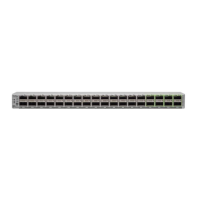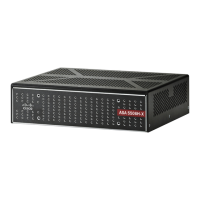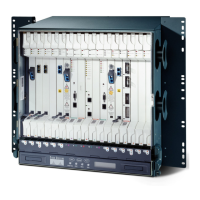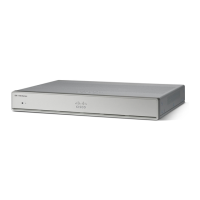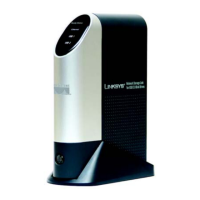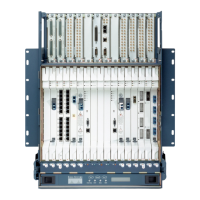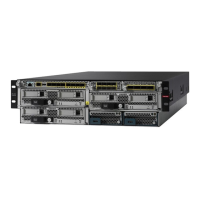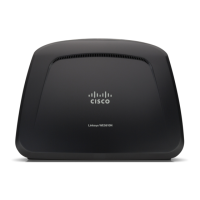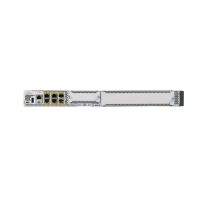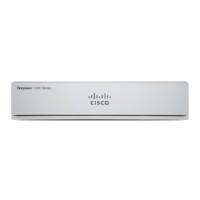How to fix poor frequency response on Cisco GS7000?
- MMonica RogersSep 10, 2025
To improve poor frequency response on your Cisco Network Hardware, ensure that all RF cables are properly connected and that the diplexers match the installed splitter.




How to fix poor frequency response on Cisco GS7000?
To improve poor frequency response on your Cisco Network Hardware, ensure that all RF cables are properly connected and that the diplexers match the installed splitter.
What to do if only the Power LED is on and other LEDs are off on Cisco GS7000?
If only the Power LED is lit and the other two LEDs are off on your Cisco Network Hardware, the software OS may not be booting correctly. Try cycling the power supply or pressing the OIB reset button using a slim object through the reset hole.
What to do if Cisco GS7000 Network Hardware has no power and all LEDs are off?
If there is no power and all LEDs are off on your Cisco Network Hardware, check that the shunt fuse and node power supply module have been installed correctly.
How to troubleshoot noise on the reverse path of Cisco GS7000?
To troubleshoot noise on the reverse path of your Cisco Network Hardware, examine the reverse path to identify which port(s) are exhibiting noise. Using max hold can help visualize bursty noise signals more easily.
| Brand | Cisco |
|---|---|
| Model | GS7000 |
| Category | Network Hardware |
| Language | English |
Explains the meaning of various warning and caution symbols used in the document and on the product.
Provides a detailed physical and functional overview of the Cisco 1.2 GHz GS7000 Node and its components.
Outlines critical safety precautions for operating software that controls optical transmission equipment, focusing on laser hazards.
Illustrates the placement of various warning labels on the equipment for user safety and compliance.
Describes signal flow and functions of the forward path in the GS7000 Node, from headend to subscribers.
Explains signal flow and functions of the reverse path, from subscribers back to the headend via optical fiber.
Details power input and distribution within the GS7000 Node.
Describes the RF amplifier module's function and components.
Explains different types of forward configuration modules and their impact on signal routing.
Details reverse configuration modules and their function in reverse path topology.
Describes the OIB's role in module interconnections.
Explains optical receiver module function and parameters.
Describes optical analog transmitter module function for reverse path transmission.
Explains EDFA modules function, types, and parameters.
Details optical switch module function in switching EDFA inputs.
Describes local control module function for redundancy and configuration.
Explains power supply module function in converting AC to DC power.
Lists required tools and test equipment for installation.
Shows location of RF ports, fiber ports, and test points on the node housing.
Procedure for installing the GS7000 Node on a strand for aerial mounting.
Procedure for mounting the GS7000 Node onto a pedestal or wall.
Guides installation and management of fiber optic cables for the GS7000 Node.
Explains installation of RF cables and conductor trimming.
Describes how to apply AC input power, including shunt installation and voltage checks.
Lists necessary tools and test equipment for setup and operation.
Provides functional diagrams illustrating signal flow for various configurations.
Outlines steps for forward path setup, including signal measurements and adjustments.
Details reverse path setup, focusing on optical transmitter levels and connections.
Explains configuring forward signal routing with module selection.
Describes configuring reverse signal routing with module selection.
Instructions for safely opening and closing the node housing.
Schedule for visual inspections and cleaning for equipment maintenance.
Procedure for safely removing and replacing modules in the GS7000 Node.
Recommendations for cleaning optical connectors for optimal performance.
Troubleshooting steps for no RF output when receiver LED is off.
Troubleshooting steps for no RF output despite good fiber optic light levels.
Troubleshooting steps for addressing poor Carrier-to-Noise (C/N) performance.
Troubleshooting steps for resolving poor distortion performance issues.
Troubleshooting steps for addressing poor frequency response.
Troubleshooting steps for no RF output from the reverse receiver.
Provides contact info and resources for technical assistance.
Chart to determine operating levels considering linear tilt for 1.2 GHz amplifiers.
Table showing insertion loss and tilt for forward linear equalizers.
Introduces the EDR 85 System and its features for reverse path transmissions.
Describes EDR transmitter module, components, and operational modes.
Explains procedures for reverse path balancing using EDR and test signals.
Lists equipment for EDR troubleshooting and a chart for transmitter module issues.
Overview of expanded fiber tray, its features, and benefits.
Step-by-step procedure for installing the expanded fiber tray.
Discusses fiber management principles: bend radius, routing, access, protection.
Presents WDM and O-Band configurations using the expanded fiber tray.
